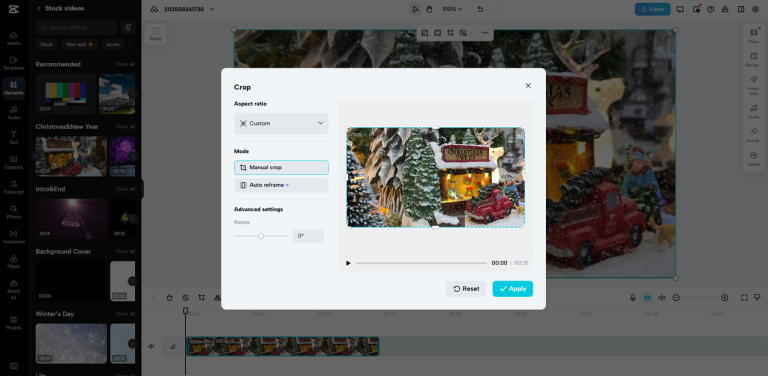Hearing loss is a problem affecting millions of people around the world and influences the media consumption of individuals. Captions are important to make sure that video content reaches all audiences, including those with with hearing impairments. The absence of captions on videos limits the opportunities of many people to enjoy quality experiences in entertainment, learning, or work. By implementing such tools as the automatic captioning of CapCut Web, you can make your space more inclusive of all viewers. In addition to editing such as crop video, CapCut Web provides real-time captioning technology that changes accessibility.
Comprehending the Requirements of the Audiences with Hearing Impairments
Hearing-impaired audiences are seriously disadvantaged when they do not have captions on videos. They are not able to pick up conversations, important information, or context. This disparity leaves them out of vital communication, professional growth, and cultural involvement. In learning, lack of captions inhibits learning. In entertainment, lack of text eliminates pleasure. Captioning are not merely subtitle; they are a tool of empowerment. You level the playing field by including them. You also make your content look more professional, thoughtful, and responsible.
How AI Makes Captioning Easy to Include
Video transcription is tedious and time-consuming. You have a high potential of making mistakes or lack of synchronization It is here that an AI caption generator transforms the whole experience CapCut Web is a speech recognition tool that automatically transcribes voice audio into text. It syncs captions with speech to make it clear and easy to read. You can write in real-time to correct text or move around. CapCut Web can also be translated into different languages, so you can target more people. This technology will save you time and make it effortless to access it.
Beyond Basic Subtitles: Enhancing Experience for Hearing-Impaired
Captioning today is more than a display of dialogue. The CapCut Web enables you to edit captions to make them more readable. You can change font, style, color and effects to fit your brand or viewer requirements. Contextual notes such as [music playing] or [laughter] enhance the listening experience of the hearing impaired. These descriptive captions give emotional and situational depth. With CapCut Web, the captions will be visible in various screen resolutions on smartphones, laptops, or larger screens. This renders content flexible to current viewing patterns.
Advantages to both Creators and Audiences
The inclusion of captions is helpful to both creators and audiences. As a creator, captions add video watch time. Viewers pay more attention and stay longer as they can track the content without losing information Captions enhance trust, demonstrating that you are concerned with inclusivity. To the audiences, captions create a sense of belonging and they accommodate different learning styles. The global standards are promoting accessibility in the digital media platforms With the help of CapCut Web, you make your work compliant with these accessibility standards. This not only accommodates the deaf audience, but also enhances your coverage and image.
Steps to Reach Hearing-Impaired Audiences Using an AI Caption Generator
Step 1: Prepare your video Log in to CapCut and click on “Video” in the main menu. Next, select “New video.” Upload the clip from your system, drag and drop, or connect via Google Drive or Dropbox. This gets your content ready for captioning.
Step 2: Create inclusive captions Click on the “Captions” tab in the editor. You’ll see options for manual input, auto recognition of lyrics, uploading files, or generating auto captions. To serve hearing-impaired audiences, click on “Auto captions,” pick your language, and click “Generate.” Customize the font, curve, text size, and placement for readability.
Step 3: Share inclusively When you’ve finished adjusting captions, click “Export” on the top right. Choose the download tab to set resolution, quality, frame rate, and format. Export your video to your device so you can share it with audiences who rely on captions for full engagement.
The Future of Inclusive Media AI Captioning
The media world is becoming more inclusive, not an option anymore. Inclusion of captions is no longer a secondary characteristic, but it is becoming a necessity in all content. The possibility to make a video accessible can be integrated into any video creation process with the help of AI-powered tools, such as CapCut Web. It will be the norm in the future that people will demand captions expectantly, whether they are hearing or not. This normalization leads to cultural and social advantage where equality of access will be a universal practice. One of the major elements of this inclusive media landscape will be captioning.
Conclusion
Captions are important in communicating to hearing-impaired audiences in a manner which is significant to them. They break boundaries and expand possibilities in the educational, entertainment, and business relationship areas. The auto caption tool on CapCut Web is an intelligent functionality that simplifies it, accurate, and editable. Besides having simple subtitles, it provides the opportunity to personalize and add context information. As you go on writing more, you should consider inclusion of captions. CapCut Web makes accessibility not only a challenge but also a common practice. Inclusive media starts when each video greets each viewer.


